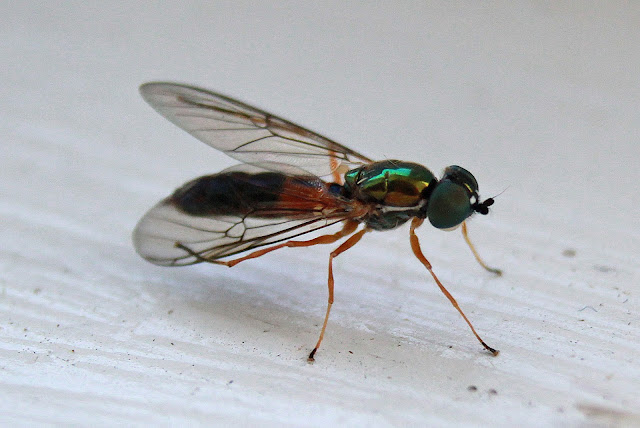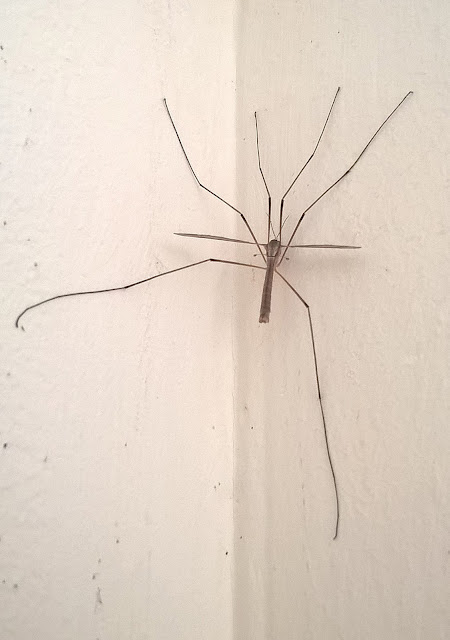From your local friendly Doomsday Cult
Friday, 30 September 2016
Nuke Map
It's fast becoming apparent that the only hope for the earth's biodiversity is the self destruction of large numbers of the human population which will probably come about by natural pressures. With 30,000 nuclear warheads on the planet it's very likely that the planet's self regulatory solution to the biological crisis will involve nuclear conflict.
To see whether your nature reserve (bio-diversity refugia) will survive the initial blasts check out this map.
Thursday, 29 September 2016
Skinning Up
From time to time in the past, I've come across some dead specimens that would have been great to preserve. I have come across dead Chimney Swift and Yellow-billed Cuckoo on Corvo and in other places found dead raptors and even a Glaucous Gull once. I could never find a taxidermist to prepare a skin or a specimen so thought I would have a go at teaching myself. Here's my first efforts and some instructions if you fancy having a go too.
Mounted skins (all specimens naturally killed)
PREPARING A SKIN
You will need a good fresh specimen. Best to freeze specimens as soon as possible (also I presume it kills of any pathogens??). Defrost thoroughly before use.
First thing to do is break the humerus bone (the one between the shoulder and the arm of the wing) on both wings
Blow the feathers apart on the breast and make an incision from top of breast to bottom of breast plate. If you accidentally go too far and cut into the perritoneal membrane all the guts will come out and could soil the skin. If you do this pull all the guts out and blot with tissue. Through the whole process keep washing your hands and keeping the surface clean so not to soil the skin.
Gently peel off the skin- like un-zipping a coat and flashing
Next push the legs up beside the abdomen and cut the legs with some sturdy scissors at the knee joint. Basically your trying to keep the legs attached to skin but unattached from the musculature, skeleton and organs (the viscera).
Then using the scissors cut the spine at the base of synsacrum- the main bone on the back of the bird. As you can see from this image I've ballsed it up and cut through the peritoneal membrane so the guts have erupted. Do not panic- just scoop out the guts and blot the whole area to keep things dry and tidy. Be very careful when cutting the spine to not cut the tail off!
Now gently pull out the viscera- clipping any attachment from the wings and legs as necessary. It's just like taking a onesie off but cutting your legs and arms off and leaving them in the onesie and pulling out your torso but with your head still in the hood.
Now its time to pull the whole thing over your head. Very careful with this part- its very easy to split the skin. Just pull the skin to the edge of the eye socket and then using a scalpel literally scalp it! Cut the skin away from the viscera- cutting through the skull- the purpose here is to leave the bill and front of the skull in place.
I haven't been careful enough here and the skin has split. However it was enough to be able to open up the skull and then blot out the brains and soft tissue with a cotton bud. Good to remove the eyes too and stick a bit of surgical wool or cotton bud tip in them.
If you've had a good day you should be left with something like this- basically a bird without it's coat on (and no arms and legs too)
and on the other side of the table should be something like this. You can stuff these with cotton wool and stitch them up but I quite like this effect- and it's easier!
Wednesday, 28 September 2016
Last few days
On the road
Spent the last couple of days in Oxfordshire, doing a bit of moth catching and working on the biobltiz at Holly's (THE OLD VICARAGE) and visiting a couple of spots on the Chilterns near Aston Rowant (did a bit of foraging too).
Red Kites over farmland in Oxfordshire
The mobile obs in action (still need to get a dongle to get internet anywhere and also thinking of getting solar panels on roof so can go completely off grid). Using E-bird and I-record can get a change in scenery and do a bit of wild card exploring and recording away from the constant effort patches.
Holly enjoying herself while I'm processing the moth catch. (In my defence we did spend time foraging for stuff for Holly to make autumn decorations out of too and also for complete retribution- went shopping in Mothercare)
Back at the obs
Spent Sunday skinning birds- going from top to bottom hopefully demonstrates my improving technique (Jack Snipe (First attempt I set the head the wrong way round!?- this was the one that Steve and Glenn witnessed having a head on aerial collision with a Herring Gull! ) , Juvenile Crossbill (specimen found by Pooran on Bedzed- a local vagrant), Greenfinch, Chaffinch and Bullfinch- all from Sue's friends collection of window and cat kills in Kent). Just to reiterate-all specimens naturally killed.
Vestal in the trap on Sunday- the first of the year
A dark morph Boxworm Moth Cydalima perspectalis. The second record for the farmlands following a pale morph last week.
Rush Veneer - 3 last night and recorded most evenings recently.
Beaded Chestnut- the first of the year.
Mallow- another first for the year
Back to work this morning- a busy time of year all round. Hoping to get more help in to keep up with the autumn rush (i.e. to make sure plenty of time to get in the field birding and recording at this most exciting time of year).
More views on the campervan (the mobile obs/office- response vehicle for when the capitalist's apocalypse peaks)
Saturday, 24 September 2016
Autumn Saturday
Snipes on 100 acre. At least 20 around at the moment. Also the first Jack Snipe of the autumn yesterday.
Male Mandarin on 100 acre- still a scarce local bird. There's a Garganey on south lake today too but I couldn't find it.
Lapwings on 100 acre, 20+ around at the moment
Common Buzzard- now a more or less daily occurrence- this fresh juvenile bird can be aged by lack of moult limits in wing or tail and diffuse border to the trailing edge of the wing and tail
A pale phase Common Buzzard moving south- not a local bird as would recognise this distinctive individual
Sallow- a classic autumn moth, mimicking autumn leaves
Black Rustic- a beautiful black velvet texture to these
First time I've seen one of these- like a large Centurion Fly but with a red segments on the abdomen
First time I've seen one of these- like a large Centurion Fly but with a red segments on the abdomen
Loads of crane flies around at the moment
and cranes too!
Friday, 23 September 2016
A London Naturalist
The great thing about being a naturalist in London is the rich natural history and environmental culture within the city. Every day and night something is going on- yesterday evening I attended the National Park City event at the South Bank Centre and tonight I went to a London Natural History Society talk about migration by Dominic Couzens. Tuesday night I was at a local Green Party meeting hearing a talk about how to get yourself arrested campaigning for environmental justice. Between the Natural History Museum, the Linnean Society, the London Natural History Society, the London Zoological Society, the Horniman Museum, the London Wetland Centre, the London Wildlife Trust, Rainham RSPB, various Universities events and lectures, the Arthouses and Galleries and an extensive network of smaller local groups/organisations, there is basically something going on somewhere all the time. A lot of the natural history research going on across the planet ends up being presented to London so there's always new and exciting stories being told across the capital. With such an intricate network of organisations, small groups and individuals, there's plenty of plotting, underground meetings and dealings going on all over the shop.
With 13000 recorded species, London is one of the most biodiverse areas of the UK, 47% of London is green space, 19% of that is nature conservation habitat, there is a great network of reserves, LNRs, SINCs, regional parks and a little bit further out the Thames Estuary is a RAMSAR site.
Its basically bloody brilliant being a London Naturalist. Also there's a long tradition of the naturalist community being in conflict with the Capitalists- the bankers, the industrialists and the corrupt courts so something's always kicking off too!
.....and 30 mins to Gatwick from here to get access to the rest of the planet! (and on that note here's a superb blog post by the cutting edge biodiversity group working at the airport BIODIVERSITY GATWICK )
The London National Park City Event yesterday evening
The LNHS talk by Dominic Couzens tonight
The Natural History Museum- the Citadel of Nature
The wildlife garden here has a species list of something like 6000! (Unfortunately Capitalists which have infiltrated the NHM board want to build on it to increase consumer ((as opposed to increasing visitor engagement/impact)) numbers to the museum)
The wildlife garden here has a species list of something like 6000! (Unfortunately Capitalists which have infiltrated the NHM board want to build on it to increase consumer ((as opposed to increasing visitor engagement/impact)) numbers to the museum)
The London Wetland Centre
Rainham- another nature temple in the city
The London nature reserve network is extensive- here's us
The London nature reserve network is extensive- here's us
Regents Park- the London Parks are some of the best city parks in the world
Richmond Park and biodiversity improvements at the Isabela Plantation.
The Horniman Museum near Crystal Palace- a relatively hidden natural history gem
London Zoo
Comforting to know I'm never more than 10 miles or so from a Hooded Pitta! (Plus all the other exotic flora and fauna which is present in the various London parks, zoos and collections) (Pic by Dingers)
Always plenty of courses to attend- this is one I took on grass id at the NHM
Plenty of fairs and outdoor events- here's us at the Carshalton Environmental Fair
Bioblitzes
Marches
Nature themed Modern Art- one of my favourites -Marcus Coates
Great pro-nature bands and music- here's the Arcade Fire in Hyde Park
All the wildlife gardening going on over the city
All the wildlife gardening going on over the city
The Eco-village of Bedzed. Within the Beddington Farmlands recording area. I could go on and on.
Subscribe to:
Comments (Atom)





















































